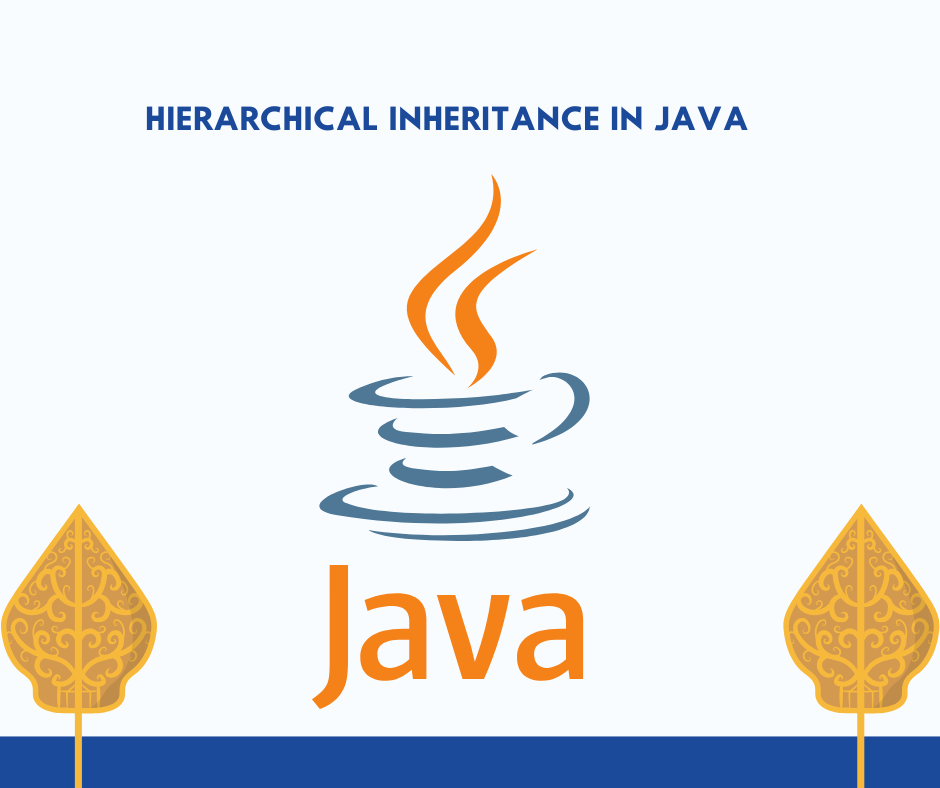Understanding Hierarchical Inheritance in Java: Concepts and Examples

Strong 8k brings an ultra-HD IPTV experience to your living room and your pocket.
Inheritance is a core concept in object-oriented programming (OOP), enabling one class to inherit the properties and behaviors of another. It encourages code reuse, modularity, and scalability, making it an essential tool for efficient programming. Among the various types of inheritance in Java, hierarchical inheritance is notable for allowing multiple child classes to share common characteristics while maintaining their unique features.
What Is Hierarchical Inheritance?
Hierarchical inheritance occurs when multiple child classes inherit from a single parent class. This structure enables all subclasses to access the parent class's properties and methods while allowing them to define their specific attributes and functionalities.
In hierarchical inheritance:
Parent Class: Serves as the base class, providing shared functionality to all subclasses.
Child Classes: Derived classes that inherit from the parent while adding or customizing features as needed.
For example, consider a parent class Animal with child classes such as Dog, Cat, and Bird. Each subclass inherits common properties like name and age and behaviors like eat() and sleep(), while introducing unique features such as bark(), meow(), or fly().
Key Features of Hierarchical Inheritance
Shared Functionality: All child classes inherit common attributes and methods from the parent class.
Code Reusability: Shared code in the parent class eliminates redundancy across subclasses.
Specialization: Subclasses can introduce unique behaviors and attributes or override existing ones.
Scalability: New subclasses can be added seamlessly without disrupting the existing hierarchy.
Benefits of Hierarchical Inheritance
Efficient Code Reuse
By centralizing shared features in the parent class, hierarchical inheritance reduces duplication, streamlining development and minimizing errors.
Simplified Maintenance
Since shared functionality is consolidated in the parent class, updates or fixes can be made in one location, propagating to all subclasses.
Clear Modularity
Hierarchical inheritance promotes a logical separation of responsibilities. The parent class handles general features, while subclasses focus on specific implementations.
Flexibility for Expansion
New subclasses can easily be integrated into the hierarchy, supporting the system’s evolution over time.
Supports Polymorphism
Hierarchical inheritance facilitates polymorphism, enabling objects of different subclasses to be treated as objects of the parent class, enhancing programming flexibility.
Practical Uses of Hierarchical Inheritance
E-Commerce Platforms
Hierarchical inheritance is useful for categorizing products in e-commerce systems. For instance, a Product class can serve as the parent, with subclasses like Electronics, Clothing, and Books. Common attributes like price and description reside in the parent class, while subclasses define specific attributes, such as warranty for electronics or author for books.
Banking Systems
In banking applications, an Account class can act as the parent, with subclasses like SavingsAccount, CurrentAccount, and FixedDepositAccount adding features like interest calculation or withdrawal limits.
Transportation Management
For transportation systems, a Vehicle class can be the parent with subclasses like Car, Bike, and Bus. Common methods like startEngine() and stopEngine() are inherited, while unique behaviors are defined in each subclass.
Educational Software
An educational platform can use a Person class as the parent, with subclasses like Student, Teacher, and Admin. Shared attributes like name and ID are inherited, while distinct responsibilities are handled in each subclass.
Challenges of Hierarchical Inheritance
While hierarchical inheritance offers numerous benefits, it also presents certain challenges:
Tight Coupling
The dependency between parent and child classes can lead to issues if changes in the parent class inadvertently affect all subclasses.
Complexity in Large Systems
As the number of subclasses increases, the hierarchy can become difficult to manage and understand.
Limited Applicability
Hierarchical inheritance is not suitable for scenarios requiring multiple inheritance, which Java does not directly support.
Overriding Pitfalls
Improperly overridden methods in subclasses can lead to inconsistent behavior, undermining the system’s reliability.
Best Practices for Implementing Hierarchical Inheritance
Design for Future Growth
Ensure the parent class is flexible enough to accommodate potential future subclasses without requiring significant restructuring.
Avoid Excessive Overriding
Limit method overriding in subclasses to prevent inconsistencies and maintain a clear inheritance structure.
Leverage final and abstract Keywords
Use final to restrict specific methods from being overridden.
Employ abstract to define methods that must be implemented by all subclasses.
Adhere to the Single Responsibility Principle
Each class should focus on a single responsibility. The parent class manages shared logic, while subclasses define specialized functionalities.
Utilize Polymorphism
Design systems to take advantage of polymorphism for flexible and dynamic behavior at runtime.
Maintain Comprehensive Documentation
Document the inheritance structure to ensure clarity and ease of use for other developers.
Core Concepts in Hierarchical Inheritance
Access Modifiers
Access modifiers (public, protected, private) determine the visibility of attributes and methods in subclasses, controlling access to parent class elements.
Overriding and Overloading
Overriding: Subclasses redefine a method from the parent class to implement specific functionality.
Overloading: Multiple methods with the same name but different parameters can exist in the same class or hierarchy.
Constructor Chaining
In Java, the parent class constructor is invoked before the subclass constructor, ensuring proper initialization of inherited attributes.
The super Keyword
The super keyword allows subclasses to call parent class methods or constructors, resolving ambiguity in cases where both define similarly named elements.
Common Misconceptions About Hierarchical Inheritance
Inheritance Guarantees Reusability
Although inheritance promotes code reuse, it should be implemented only when there is a logical relationship between classes.
All Methods Are Inherited
Private methods in the parent class are not directly accessible to subclasses. Access must be provided through public or protected methods.
Subclasses Operate Independently
Subclasses rely on the parent class for shared functionality, meaning changes in the parent class can significantly impact them.
Conclusion
Hierarchical inheritance in Java is a versatile and effective mechanism for structuring classes in an organized and reusable manner. It simplifies development, improves maintainability, and supports modular and scalable designs.
To fully utilize hierarchical inheritance, developers must carefully plan the inheritance hierarchy, adhere to best practices, and leverage key features like polymorphism, constructor chaining, and access modifiers. This ensures the creation of robust and flexible software systems capable of adapting to future requirements.
Note: IndiBlogHub features both user-submitted and editorial content. We do not verify third-party contributions. Read our Disclaimer and Privacy Policyfor details.







